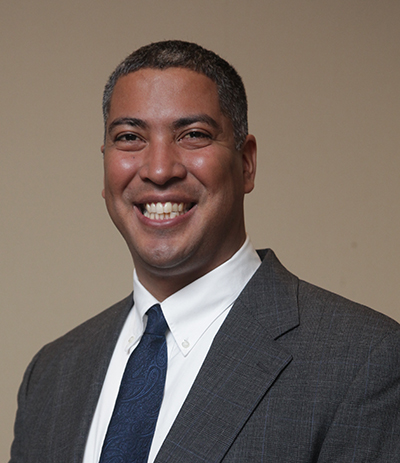Written by Rafael E. Luna, Ph.D.
Executive Director, National Research Mentoring Network
with Samantha Bear, M.Ed.
In last month’s newsletter, I introduced the notion of the Invisible College and opening its door to underrepresented minority biomedical scientists. This month I describe the necessity of accessibility to the Invisible College for all citizens in our great Union, including individuals with disabilities.
The 14th Amendment provides everyone with equal protection under the law, stating,
No state shall make or enforce any law which shall abridge the privileges or immunities of citizens of the United States; nor shall any state deprive any person of life, liberty, or property, without due process of law; nor deny to any person within its jurisdiction the equal protection of the laws.”
In 1990, Congress enacted the Americans with Disabilities Act (ADA), which is congruent with the 14th Amendment and specifically prohibits discrimination against individuals with disabilities.
 Diversity of thought serves as an essential component for research (see Biomedical Research: Strength from Diversity, Elizabeth L. Wilder, Lawrence A. Tabak, Roderic I Pettigrew, Francis S. Collins, Science 15 Nov 2013) and drives finding new solutions to previously intractable biomedical problems for the greater good of society and for the benefit of future generations. Such diversity includes people with a disability, there are individuals with apparent and non-apparent disabilities, and we should be cognizant of the challenges that both groups face. In both scenarios, we are required to look beyond what is visible.
Diversity of thought serves as an essential component for research (see Biomedical Research: Strength from Diversity, Elizabeth L. Wilder, Lawrence A. Tabak, Roderic I Pettigrew, Francis S. Collins, Science 15 Nov 2013) and drives finding new solutions to previously intractable biomedical problems for the greater good of society and for the benefit of future generations. Such diversity includes people with a disability, there are individuals with apparent and non-apparent disabilities, and we should be cognizant of the challenges that both groups face. In both scenarios, we are required to look beyond what is visible.
During my time as a postdoctoral fellow at Harvard Medical School, I met an incredibly smart biomedical engineer, Dr. Dennis Dean. I was impressed by his facility with computer science and algorithms, along with his passion for biomedical research at Brigham and Women’s Hospital. We became friends and I enjoyed the power of story with which he explained the rational aspects of code and the pleasure he displayed from describing his biomedical research.
While it is quite visible that Dr. Dean is a gifted scientist, I had no idea that he was diagnosed with a learning disability until he shared his story with me at a recent event for the Biomedical Science Career Program. We have been friends for many years, and I have always been impressed with his intellect, so I was surprised to learn of his disability and the challenges he had to overcome in order to be successful. He told me that he has never shared his story in an official capacity, and I thought that it would be important for him to share his story with the NRMN community in this month’s newsletter.
By sharing his story with me, he helped me to think of the vast number of individuals in the United States who have managed to be successful and have overcome their disability whether diagnosed or not. His brilliance was visible; however, his disability was invisible to me. I am thankful for Dr. Dean’s mentors who have encouraged him to persist in the face of obstacles that he managed, i.e. an undiagnosed learning disability. His story provides a great lesson for mentors and peers. Even when a disability is non-apparent, we should be understanding and supportive of the person managing the associated difficulties, particularly in the biomedical research workforce.
The semblance of struggles that underrepresented ethnic minorities face is similar to the plight of individuals with apparent disabilities. Just as race is quite visible for an underrepresented minority, a disability can be quite visible for a person with an apparent disability. However throughout my career, I have noticed racial minorities and individuals with disabilities who have excelled in biomedical research due to their persistence and passion for scientific investigation. These qualities may be invisible if we do not look beyond their visible traits.
Culturally aware mentors possess the insight to see the invisible strength of the inner biomedical scientist, wherein the outside aspects of a scientist are irrelevant. It should be the invisible strength of relentless determination and curiosity that sets the biomedical scientist on her or his path to success. While the visibility of race and apparent disabilities should have no bearing on how a scientist’s work is assessed, it is still important for mentors to acknowledge that people will face additional obstacles in their career.
Under the ADA, individuals with disabilities qualify for NIH Diversity Supplements to help ensure that scientific research is colorblind to race and welcomes individuals with disabilities, since the greater the diversity of thought in research the greater the biomedical discovery. NRMN welcomes collaborations with individuals, institutions, and professional societies throughout the United States as partners to expand the pipeline for individuals with disabilities pursuing careers in the field of biomedical research.